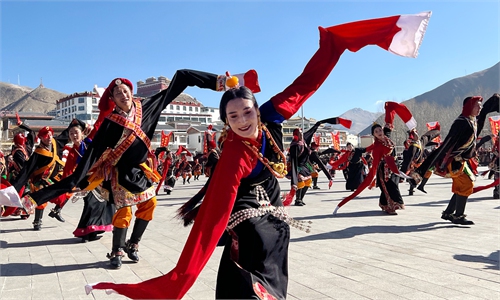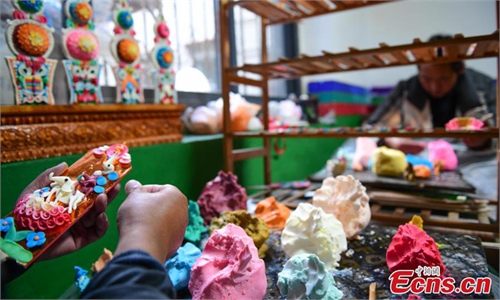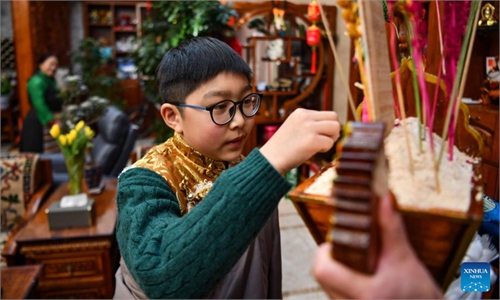ARTS / CULTURE & LEISURE
Maintaining unique traditions of Tibetan New Year celebrations
Inheritance and conservation
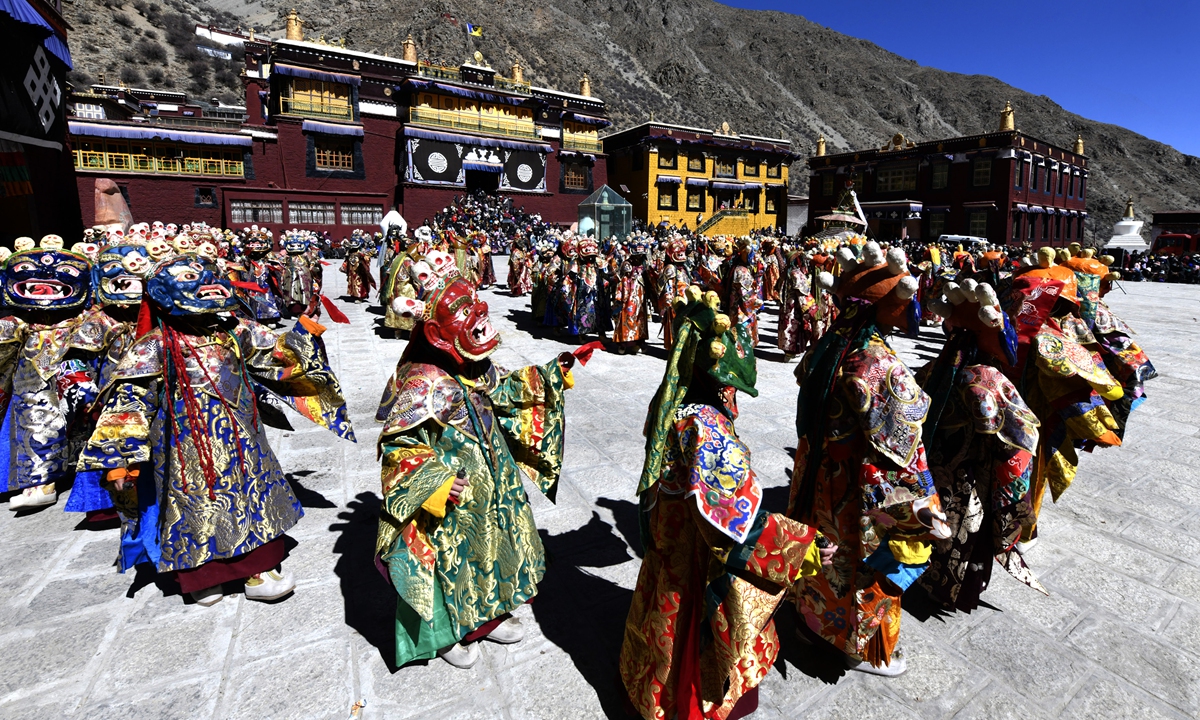
Monks attend an annual Buddha thangka displaying ritual at the Tsurphu Monastery in Southwest China's Xizang (Tibet) Autonomous Region on February 19, 2023. Photo: VCG
Although the Spring Festival has come to an end, the joy of the Chinese New Year is still there, as the Tibetan New Year - another grand festival has just arrived and is being celebrated by several ethnic groups around China.
February 21 marks the first day of the Year of the Water Rabbit according to the Tibetan calendar. Tibetan people around the country dressed in festive costumes, danced the Guozhuang and tasted delicious food to welcome the New Year.
The Tibetan New Year, also known as "Losar" or "Tibetan Spring Festival," is an important traditional festival for ethnic groups such as Tibetans, Naxi and Qiang. The festival usually starts on the first day of the first lunar month and lasts for about 15 days.
Just like the Spring Festival, the Tibetan New Year is a perfect opportunity for people to reunite with their relatives and friends.
The Tibetan New Year celebrations are diverse and include religious ceremonies, ancestor worship, dance, music, food, games and competitions. People dress up in costumes and wear exquisite jewelry and headdresses to participate in unique Tibetan dances and singing performances. They also drink butter tea, taste traditional food, and exchange gifts to express their holiday blessings and gratitude.
The Tibetan New Year is a joyful and celebratory festival, which is not only an important part of Tibetan culture, but also a precious heritage of traditional Chinese culture.
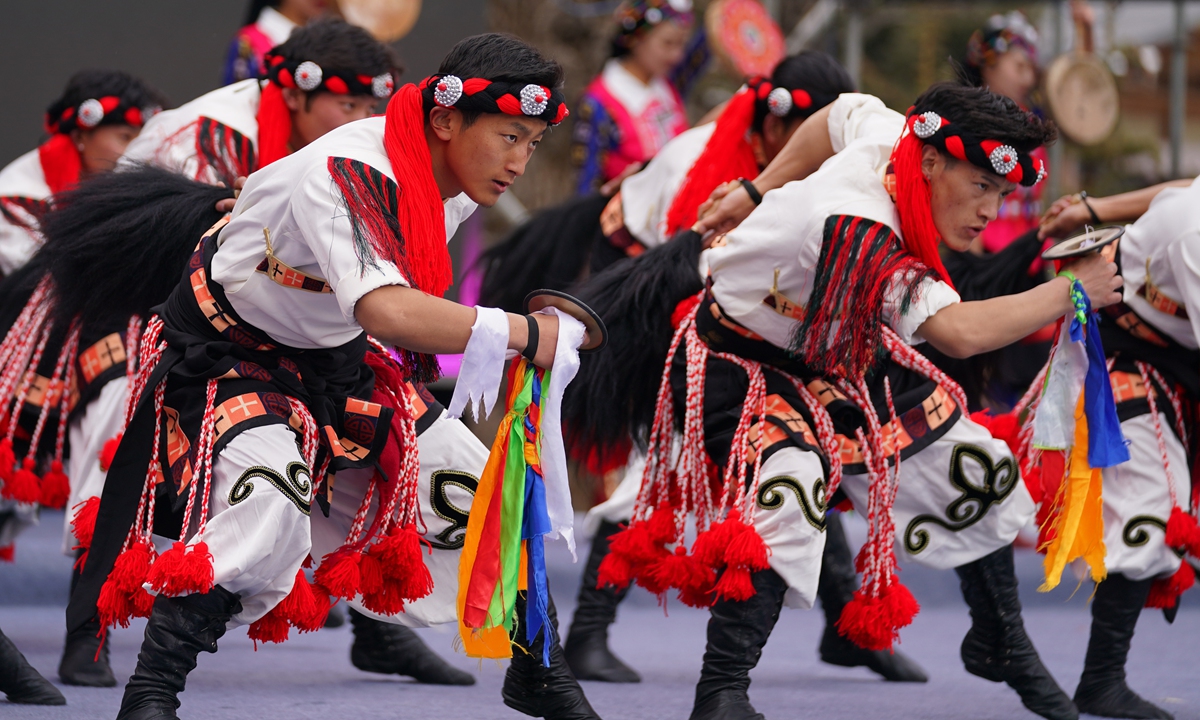
Traditional ethnic dance to the celebrate Tibetan New Year Photo: VCG
Traditions preserved
On the New Year's Day, Tashi Phunstok simmered the mulberry leaves on the mountains early this day to pray for the next year.
Tashi is a young Tibetan architect who was born in Deqen Tibetan Autonomous Prefecture in Southwest China's Yunnan Province. He celebrated the Tibetan New Year with his family.
This is one of the traditional celebrations for our festival, it consists in burning grain, pine and cypress branches to produce smoke to sacrifice to ghosts and gods, Tashi told the Global Times.
"At my hometown, we also take the Spring Festival very seriously and some of the methods to celebrate the Spring Festival are similar to the celebrations for the Tibetan New Year," the architect said.
Before the Tibetan New Year, cleaning houses is one of the most significant activities, Tsering Yangzom, a researcher of the Institute of Social Economy of the China Tibetology Research Center, told the Global Times. The Tibetan people choose an auspicious date for cleaning, which not only aims to clean dust in the houses but also helps people clear bad luck away before the new year.
Tsering noted another custom is that of making and eating Gutu [a kind of cooked wheat] on December 29 of the lunisolar Tibetan calendar.
The flour dough with different shapes is stewed with other materials such as beef, mutton and carrots, and all materials are boiled together in the evening.
When Gutu is finished, the family sits around the table and eats the dish. The flour doughballs, shaped like fish or moon, have their different meanings and are given to family members.
Tsering said that the situation of inheritance and conservation of the traditional festival has become better in recent years because of supporting policies and better living conditions of the Tibetan people.
"We appreciate the atmosphere of the celebrations more and we are proud of our culture," the expert noted.
At present, some customs of celebrating the Spring Festival such as writing New Year scrolls have also been used for celebrating the Tibetan New Year, which shows the fusion and unity of cultures of different Chinese ethnic groups, Tsering added.
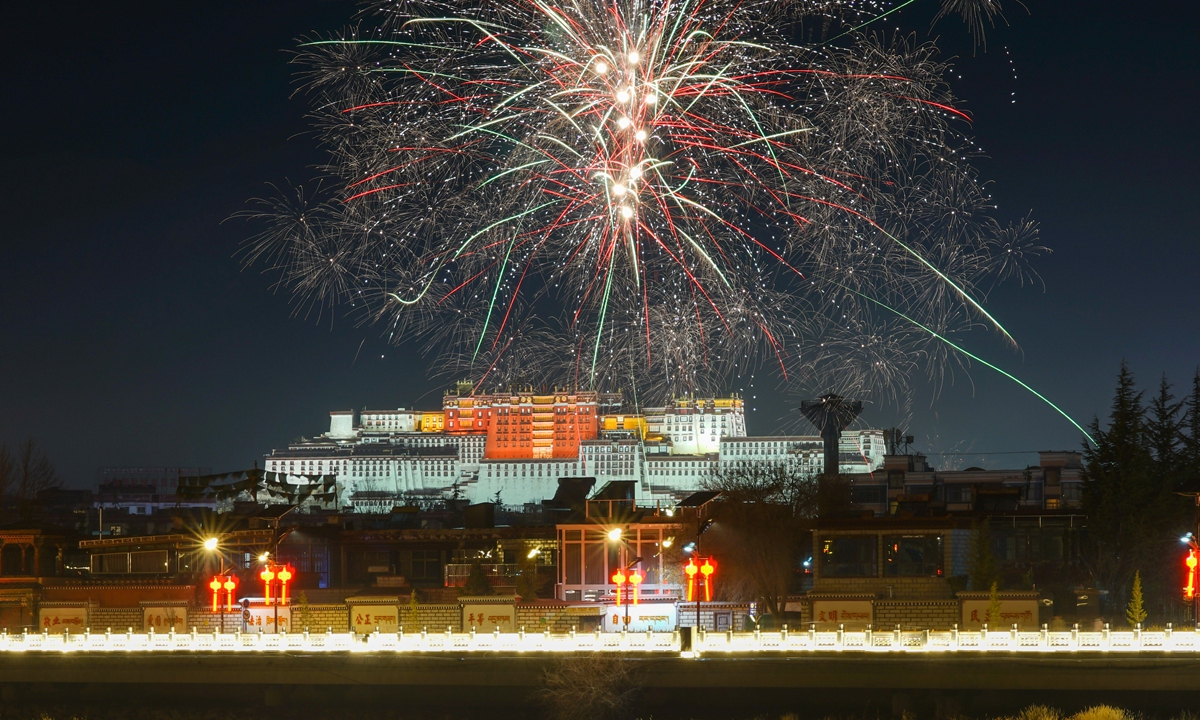
Fireworks light up the sky over Lhasa on February 19, 2023 to celebrate the upcoming Tibetan New Year. Photo: VCG
Celebration revival
This year marks the first Tibetan New Year after three years of COVID-19 epidemic.
In Southwest China's Xizang Autonomous Region, tourism has been picking up rapidly in recent months, propelled by the Spring Festival and Tibetan New Year holidays.
Business has been exceptionally good this year. With an optimized COVID-19 response, shops and stalls have gradually regained popularity.
Take the capital city Lhasa for instance, official data shows that during the week-long Spring Festival holidays, it received 287,000 tourist arrivals, up 18.84 percent year on year, and the tourism revenue hit 285 million yuan ($42 million), an increase of 15.85 percent from the same period in the previous year, the Xinhua News Agency reported.
On New Year's Eve, a fantastic and grand gala show was broadcasted on XZTV, featuring famous performers from around the country.
Before that, from February 18-20, the performers, including famous actor Jin Dong, singers Jamyang Dolma and Arafat Arslan, visited local villages, communities and the fire stations in Lhasa to celebrate the new year with them.
The 11th Panchen Lama Bainqen Erdini Qoigyijabu expressed his blessings on new year's on Tuesday.
"In the past year, it has not been easy for us and we we've all become our own heroes. The epidemic did not defeat us, and the difficulties did not crush us. On the contrary, it made us stronger and more tenacious in our hearts, and we have understood the meaning of helping each other and working together," he said via a video clip.
"In the New Year, may the great motherland be blessed with good weather, joy and peace. Pray for world peace and happiness for all living beings!"


